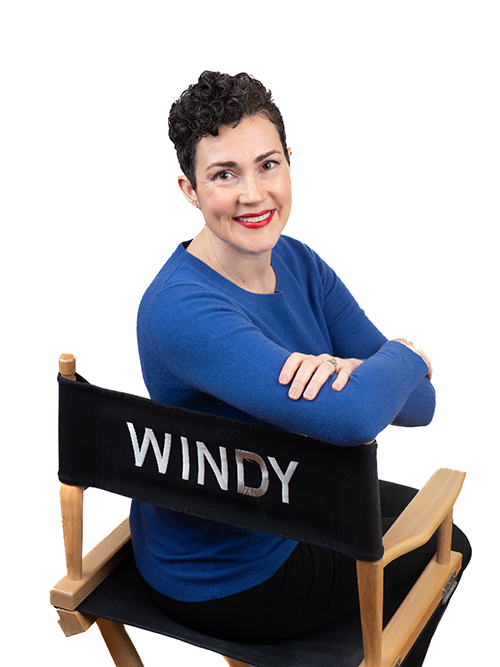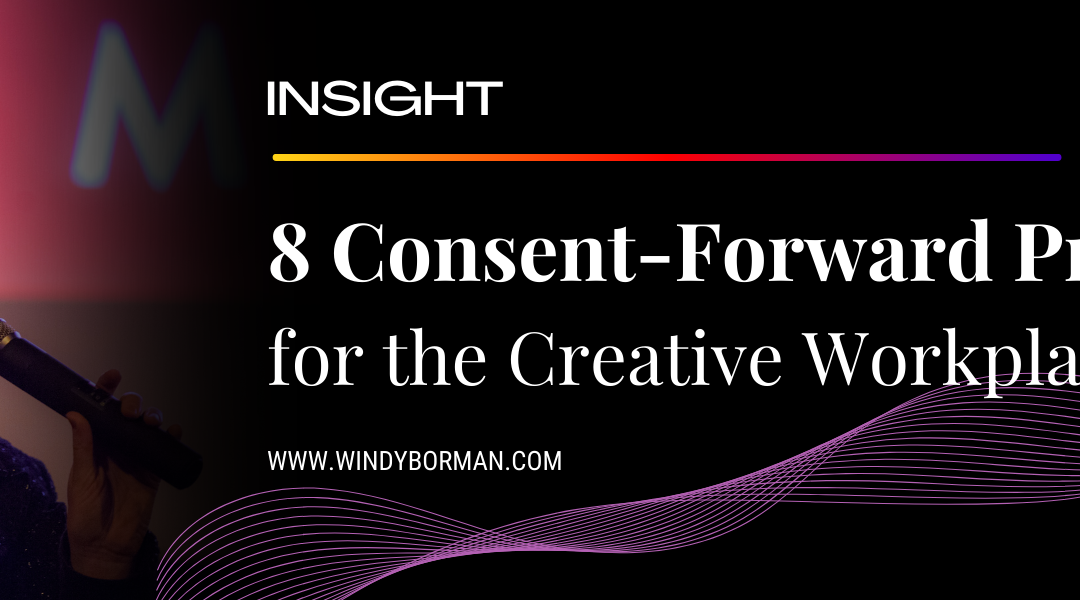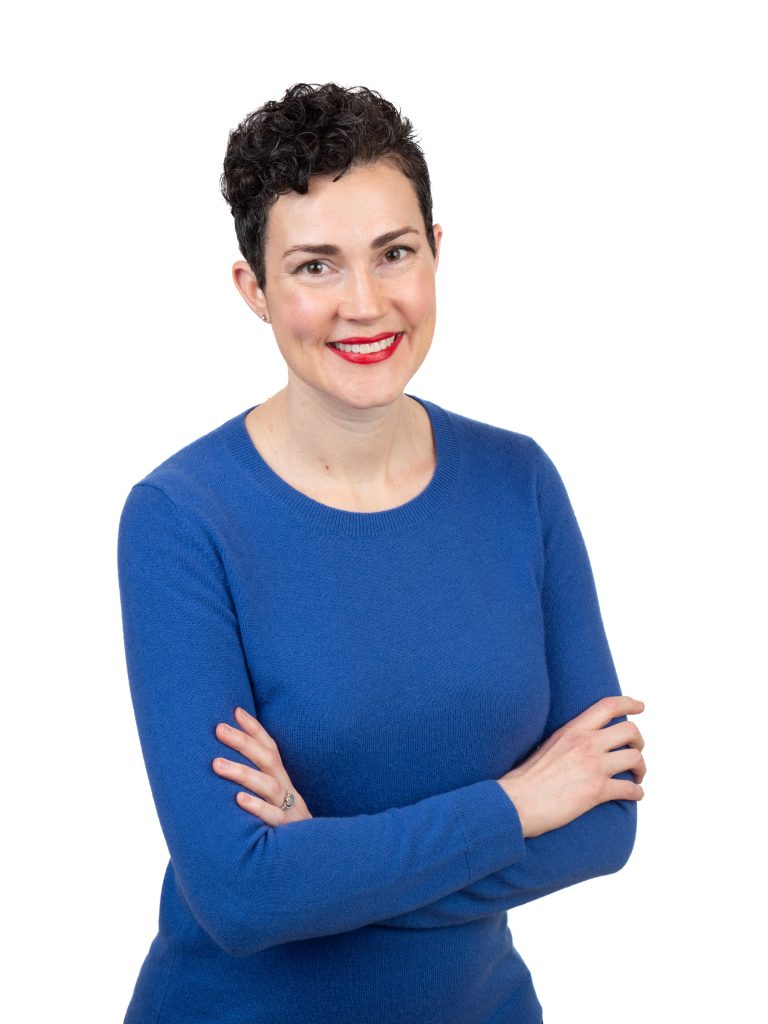Workplace power dynamics make consent tricky, even for “experts”. I’ll give you an example from my personal experience shortly…
If we want to reduce harm on set, on stage, and in other creative workplaces (such as rehearsal rooms, auditions, and edit suites), we need to provide guardrails. In my work, we call these guardrails “Consent-Forward Practices” and have included 8 of my standard practices below.
Consent-Forward Practices for the Creative Workplace:
- Put it in Writing:
- Code of Conduct: Develop these ahead of time and have everyone sign them (including the Stars and others considered “Above-the-Line”).
- Community Agreements: Develop these together to foster mutual consent and hold each other accountable.
- Baseline Boundaries: If you’re in a position of power (such as a director or department head), develop a set of boundaries ahead of time, so the performers or participants know what is and is not expected, allowed, or needed in the audition or production.
- Boundaries Check-In: Ask your colleagues about their boundaries and communicate yours. Add this to a daily Safety Meeting, pre-show check-in, or rehearsal.
- Transparent Processes: Create transparency by outlining the reporting process and making it easier for participants to communicate when something non-consensual has occurred.
- Make it “CRISPy”: Use the consent acronym C.R.I.S.P. to analyze your scripts, policies, and procedures. Amend them as needed to make them consensual.
- Bystander Intervention: When you witness harassment, choose to respond in a way that could positively influence the outcome.
- Self-Care Toolkit: “Put on your oxygen mask first”. You aren’t your best when you’re stressed. Practice self-care and build a Self-Care Toolkit to ease your stress.
- Hire Professionals: You are not alone. Hire a Consent-Forward Artist, Intimacy Professional, Anti-Racism Consultant, Cultural Consultant, and/or On-Set Therapist. To keep the power dynamics clean, have that be their only job in the production.
In this blog, I will explain how #8 (Hire Professionals) can reduce harm by ensuring you’re building consent into even your mundane practices.
The Importance of Consent-Forward Artists
If you look at this list of consent-forward practices and think, “If I’m doing the first 7 things, why do I also need to hire a professional?” I’ll give you an example from my personal experience.
Even though I am a certified Consent-Forward Artist (“CFA”)—and spent years studying and practicing consent, boundaries, trauma-informed practices, bystander intervention, and advocating for others—I still struggle to consistently advocate for myself. Why? Fear, shame, stress, and urgency all come into play.
When I am hired as the producer or director of a project, I am not wearing my “CFA” hat. Without a CFA advocating for me, I sometimes forget to pause and check in with my boundaries to see if I’m comfortable doing something. Other times, I may think the task aligns with my abilities; however, once we begin, I realize I need to change my boundaries because of a misalignment. I also may not speak up because of fear or shame.
I’ll give you an example. In 2022 I suffered a workplace injury. The condensed version of the incident is I lifted and carried heavy boxes for too long. No one ever explicitly told me I couldn’t say “No”, but I felt I would let down my colleagues if I didn’t “pull my weight”. Because I did not listen to my body and advocate for myself, my body eventually said “No” for me. My recovery process reminded me it is always worth the time and money to slow down and move at the speed of safety.
I am 100% confident that if a Consent-Forward Artist had asked me, “Do you feel confident doing this?” before I began, I would have paused to check my boundaries and said, “Actually, these boxes seem pretty heavy. I could use some help.” That 10-second pause would have prevented an injury and saved everyone time and money.
Hiring a Consent-Forward Artist ensures you have an unbiased third party on set. Not only will they build guardrails into the creative process by allowing people to communicate their boundaries (#3: Boundaries Check-In), but they can also examine your production procedures (#4: Transparent Processes) to ensure they are rooted in consent (#5: Make It “CRISPy”). If you hire a CFA in Pre-Production, they can help you develop a Code of Conduct or Community Agreements (#1), Baseline Boundaries (#2), and teach your crew about Bystander Intervention (#6) and Self-Care Toolkits (#7). They add tremendous value to creative productions.
In summary, anyone can build consent-forward practices into their creative workstream; but you will increase safety and decrease liability if you hire a Consent-Forward Artist.
If you’d like to learn more about Consent-Forward Creativity:


